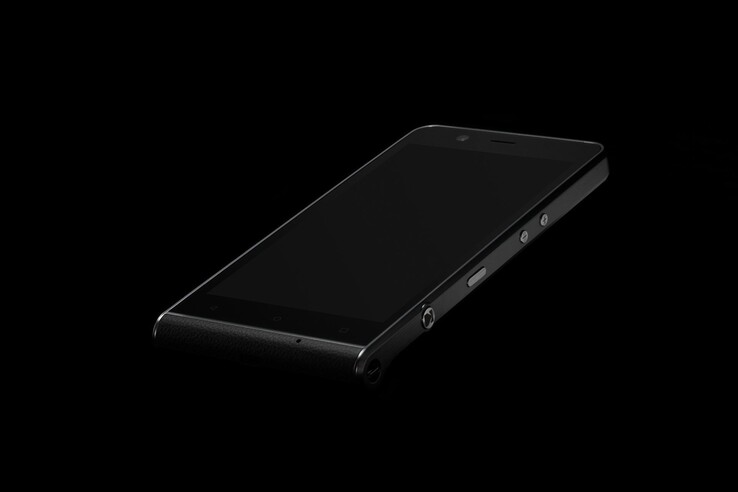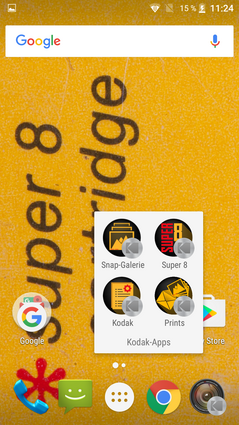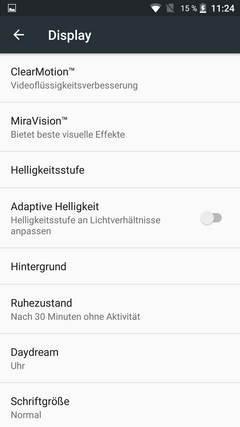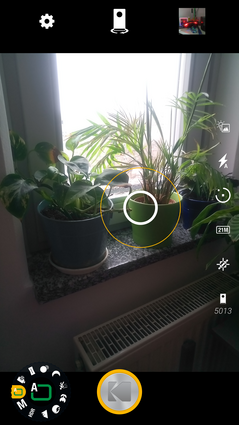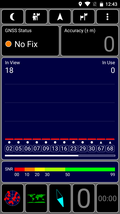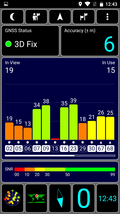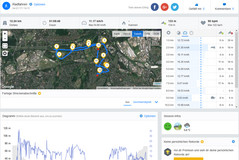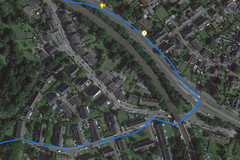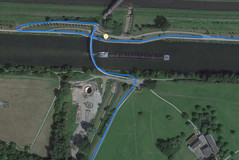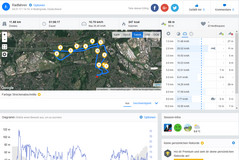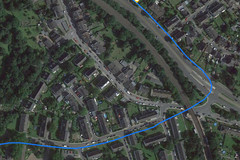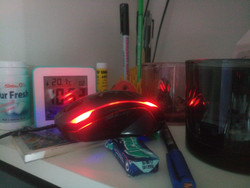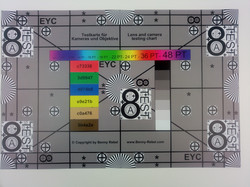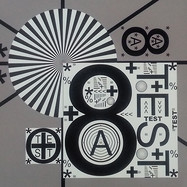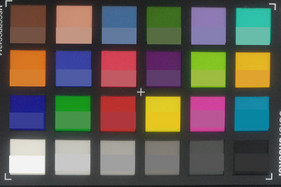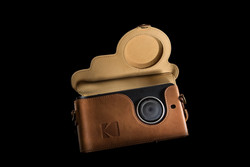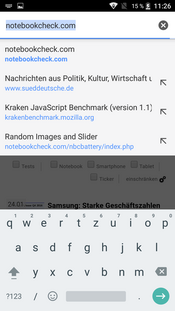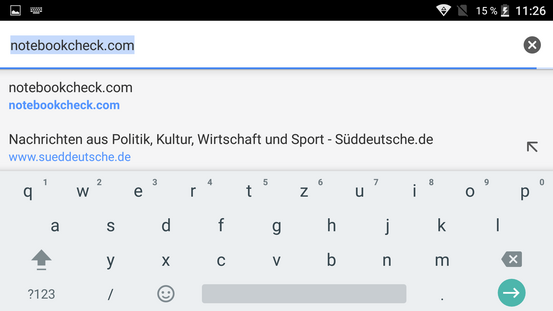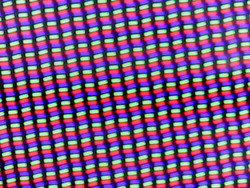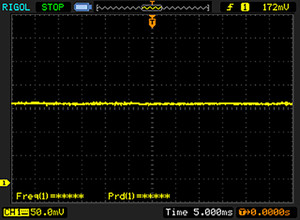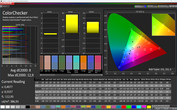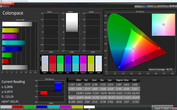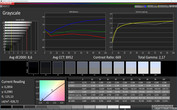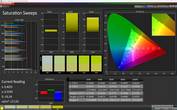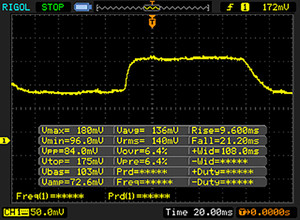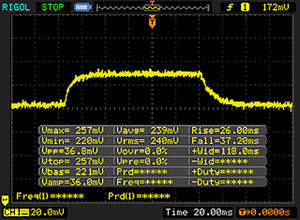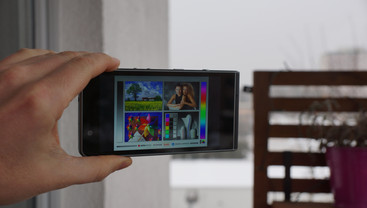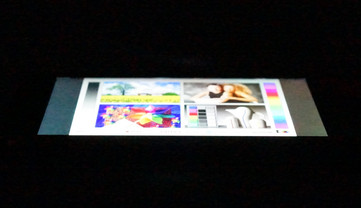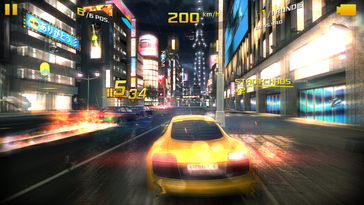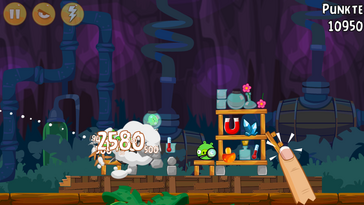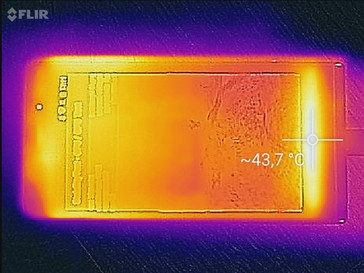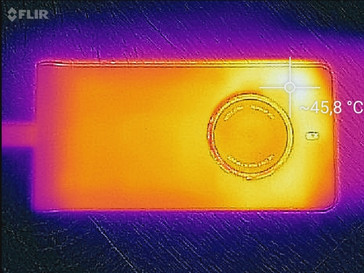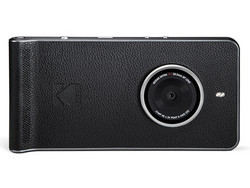Kodak Ektra Smartphone Review
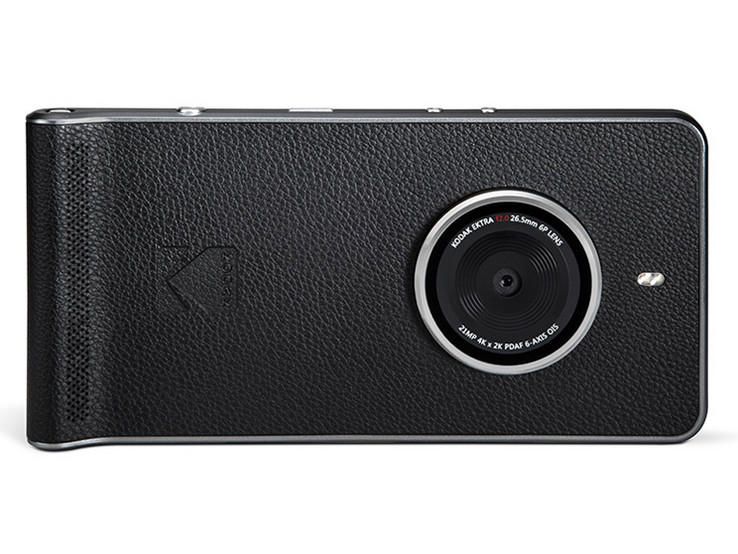
For the original German review, see here.
Kodak used to be one of the big names in the photography industry. But the Americans missed the digitalization, and their decline followed, including temporary insolvency. By now, the company has primarily specialized in the production of professional printers, but the name Kodak still has a ring among photographers. It is thus no surprise that the first Kodak smartphone, the Kodak Ektra, especially wants to excel at photography.
With a recommended price of 499 Euros ($539), the smartphone is positioned in the upper mid-range segment, where there is plenty of competition, since older high-end smartphones quickly become more affordable and then enter this price range. Among the comparable devices is the Huawei P9 , also bearing an illustrious camera name due to its cooperation with Leica. The OnePlus 3T is the darling of all penny pinchers, because it offers high-end features at an affordable price. The Asus ZenFone 3 shines because of a particularly stylish design, and the LG V10 has a second screen above the main display. Currently, all of these cost even less than the Kodak. Let us see if the additional cost is justified for photography fans.
Case
The Kodak Ektra's design can be fittingly described as "retro". The leather-looking back with a massive camera casing really looks like an old camera. The front offers the plain design of modern smartphones that focuses on the screen. Three capacitive buttons below the display are a small special feature of the front side.
The Kodak Ektra is not a smartphone for people who like compact phones: Despite the only 5-inch display, the case is significantly more expansive than the Huawei P9 with a 5.2-inch screen. The thickness is particularly noticeable: The smartphone is up to 14 mm (~0.6 in) thick due to a side grip that supports the camera look. However, the grip is too small to ensure real stabilization and a safe grip while taking pictures.
The manufacturer Bullit, who has licensed the Kodak brand for smartphones, uses mainly plastic as material, which actually does leave a negative impression in this price category. The leather look on the back ensures a safe and pleasant grip, but the visible transition between the two leather-looking parts on the bottom is ugly.
The fabrication is quite clean, the smartphone solid. Applying pressure on the front clearly comes through to the display; however, even strong pressure is not visible on the back. The device can be barely twisted.
Connectivity
Our test device has 32 GB of built-in storage, which can be expanded up to 128 GB via the microSD card slot. It also comes with 3 GB of RAM. Since the case is so bulky, it is no wonder that Kodak can easily fit a 3.5 mm headphone jack in it.
The USB Type-C port is even USB 3.0 capable and supports USB-OTG, meaning that it is possible to connect external storage devices with an appropriate cable. There is no NFC or fingerprint sensor, both of which should be standard in this price range.
Software
Basically, the manufacturer has installed an unmodified version of Android 6.0 and does not use a launcher of their own. This should make updates easier. As a matter of fact, an update was offered to us during our review and we installed it promptly. After the update, the phone still runs on Android 6.0, but the security patches are from December 2016 and therefore relatively up-to-date. There is no news about an update to Android 7.0.
Kodak's included software focuses on the photography and video features of the smartphone: For example, you can record video in Super 8 format, which applies appropriate filters to the videos. The app has a nice design, a fitting retro look, only the controls take some getting used to. "Snap gallery" is a picture gallery software that offers filters as well, but this is also the case with most photo apps these days. Aside from specific camera software, which we will take a closer look at in a moment, there is also the possibility of ordering physical prints of your pictures via Kodak's "Prints" app.
Communication and GPS
The fast 802.11 ac Wi-Fi is taken for granted in this price range, all slower standards and networks in the 5GHz network are supported too. Communication is quite speedy; the Kodak Ektra's receiving speed beats all comparison devices in our standardized WLAN test. When it comes to sending, only the OnePlus 3T can top its speed. In our practical test, we had full reception immediately next to the router and half reception ten meters (~33 ft) away and through three walls. Loading pages was quite speedy in both cases.
With four frequencies in the GSM, UMTS, and LTE network respectively, the Kodak Ektra is modestly equipped, most competing devices offer at least more LTE bands. The LTE module of the OnePlus 3T or the Huawei P9 also offers faster transmission speeds than our test device. Additionally, the Kodak Ektra has only one SIM card slot. Reception was consistently good in inner-city areas, even in buildings.
| Networking | |
| iperf3 transmit AX12 | |
| OnePlus 3T | |
| Kodak Ektra | |
| Huawei P9 | |
| Asus Zenfone 3 ZE552KL | |
| iperf3 receive AX12 | |
| Kodak Ektra | |
| Huawei P9 | |
| OnePlus 3T | |
| Asus Zenfone 3 ZE552KL | |
The GPS cannot pinpoint our location indoors, but it quickly attains a precision of six meters (~20 ft) outdoors.
For more precise statements about the localization, we take the smartphone on a bike ride. The professional navigation system Garmin Edge 500 is also in our backpack so we can compare their results. The Kodak Ektra believes the route to be 400 meters (~437 yd) shorter, which is most probably due to the several "shortcuts" the GPS module invents when it loses its signal between two measuring points. The professional navigation system is significantly more accurate in this case. The Kodak Ektra should suffice if you only need an approximate localization, but if you need as accurate a positioning data as possible, you should take a look at a different device.
Telephone Functions and Voice Quality
Kodak, or rather Bullit, uses the standard Android app for phone calls. Not a bad choice: It is uncluttered and offers all the essential functions.
We like the voice quality. Our call partner sounds reasonably clear and is easily understood. We do not perceive any interfering noise. Our voice is also clearly transmitted, regardless of whether we talk loudly or softly. Using the phone hands-free allows for clear conversations as well. Overall, the voice quality is good with a slight potential for improvement concerning voice clarity and noise cancellation.
Cameras
The Kodak Ektra wants to score particularly high in this discipline, after all, this used to be the core skill of the company. However, the 21-megapixel sensor of the rear camera is made by Sony, the name Kodak appears only on the giant camera module on the back. Concerning the resolution, the sensor beats all comparison devices, and the front camera with 13 megapixels is only surpassed by the OnePlus 3T that has a front camera with 16 megapixels.
However, resolution is not everything: Other technical details of the lens and especially image processing usually make the difference. The Kodak Ektra's main camera offers at least optical image stabilization and a dual LED flash, but it lacks laser autofocus and, above all, support for RAW format, which is better for editing. Instead, there is only common phase-detection autofocus.
The camera software brings the mode dial known from SLR cameras to the smartphone. After getting used to it, it turns out to be quite usable and useful to quickly switch between the different modes such as Night, Sport or Macro. In addition, there is a dedicated camera button on the side of the smartphone. It has a two-stage pressure point, so you can set the focus and then take the picture, just as with a regular camera. It works decently, although the first pressure point could be more perceptible.
We noticed that large color areas in pictures taken with the main camera quickly become spotted; colors in pictures from the iPhone 7 Plus are considerably more finely graded. Some pictures are over-sharpened, the edges become frayed. The bad low-light performance with high color noise is the most painful. The update we received during our review is supposed to improve the image quality. We took a test picture and believe that there are indeed improvements to be seen. The level of color noise is still high in low light, and spotty colors are still present, but it is not as bad as before.
Videos can be recorded in 2160p resolution, meaning in 4K. They appear very sharp and the color reproduction is good, the smartphone rapidly reacts to light changes too. However, we had to manually adjust the focus every now and then.
The front camera's 13 megapixels offer a high resolution, and while the pictures are relatively sharp, the color reproduction is clearly too bright. We like that the leaves still have clear outlines despite the backlight.
An analysis of the camera in our lab confirms that color areas are very unclean and have a high level of color noise. White in the reference color space is depicted as beige in the pictures taken with the Kodak Ektra; most shades are a bit too dark in general. Overall, objects appear sharper and more vibrant in the middle than on the edges
Accessories and Warranty
Kodak includes a charger and a USB cable in the box. There is also a wrist strap that can be attached to the device, as well as a SIM tool for opening the tray. Kodak sells very stylish camera cases made of leather for the Ektra. However, they are expensive, at almost 70 Euros (~$76). A simpler smartphone leather sleeve costs half as much.
Kodak offers a 24-month warranty for its smartphones in the EU. Please see our Guarantees, Return Policies & Warranties FAQ for country-specific information.
Input Devices and Handling
The virtual keyboard comes with Google's operating system and has not been modified by Kodak. It is a good choice, but if you want a different keyboard, you can download it anytime from the Google Play Store.
There are three capacitive buttons below the display for Android's system functions. They light up after you press them and are quite precise to handle. The touchscreen's surface feels very much like plastic and the quality impression is rather mediocre. Nevertheless, precise handling is possible, even in the corners and on the edges.
The smartphone's four physical buttons are all on the right side and control the volume, wake the device up, or activate the camera and function as a shutter button. We have already talked about the camera button with two pressure stages: a good idea with relatively good implementation. The volume buttons and the standby button also function reliably.
Display
A Full HD display is mandatory in this price range, and the Kodak Ektra delivers: The 5-inch display has a resolution of 1920x1080 pixels. However, at 418 cd/m², the display brightness is slightly lower than that of the comparison devices, and illumination is not very even with 84%; this is particularly noticeable with big color areas. Furthermore, if the brightness sensor is activated, the maximal brightness decreases to 343 cd/m², which is irritating.
| |||||||||||||||||||||||||
Brightness Distribution: 84 %
Center on Battery: 428 cd/m²
Contrast: 652:1 (Black: 0.64 cd/m²)
ΔE ColorChecker Calman: 8 | ∀{0.5-29.43 Ø4.77}
ΔE Greyscale Calman: 8.6 | ∀{0.09-98 Ø5}
Gamma: 2.17
CCT: 8952 K
| Kodak Ektra IPS, 1920x1080, 5" | Huawei P9 IPS-NEO, JDI, 1920x1080, 5.2" | Asus Zenfone 3 ZE552KL IPS, 1920x1080, 5.5" | OnePlus 3T Optic-AMOLED, 1920x1080, 5.5" | LG V10 Quantum-IPS, 2560x1440, 5.7" | |
|---|---|---|---|---|---|
| Screen | 49% | 34% | 3% | 47% | |
| Brightness middle (cd/m²) | 417 | 582 40% | 658 58% | 421 1% | 450 8% |
| Brightness (cd/m²) | 419 | 563 34% | 633 51% | 430 3% | 431 3% |
| Brightness Distribution (%) | 84 | 91 8% | 93 11% | 84 0% | 93 11% |
| Black Level * (cd/m²) | 0.64 | 0.38 41% | 0.66 -3% | 0.22 66% | |
| Contrast (:1) | 652 | 1532 135% | 997 53% | 2045 214% | |
| Colorchecker dE 2000 * | 8 | 4.4 45% | 4.9 39% | 7.1 11% | 5.18 35% |
| Colorchecker dE 2000 max. * | 12.9 | 7.4 43% | 9.1 29% | 15.3 -19% | 10.39 19% |
| Greyscale dE 2000 * | 8.6 | 4.8 44% | 5.8 33% | 6.8 21% | 6.94 19% |
| Gamma | 2.17 101% | 2.2 100% | 2.26 97% | 2.23 99% | 2.24 98% |
| CCT | 8952 73% | 6175 105% | 7840 83% | 7866 83% | 8091 80% |
| Color Space (Percent of AdobeRGB 1998) (%) | 77.78 | ||||
| Color Space (Percent of sRGB) (%) | 99.44 |
* ... smaller is better
Screen Flickering / PWM (Pulse-Width Modulation)
| Screen flickering / PWM not detected | |||
In comparison: 53 % of all tested devices do not use PWM to dim the display. If PWM was detected, an average of 8086 (minimum: 5 - maximum: 343500) Hz was measured. | |||
With 0.64 cd/m², the black level is below average, meaning that the contrast ratio is rather bad as well (652:1). Colors appear somewhat pale on the display, but the option "MiraVision" in the options menu allows for extensive adjusting of the color reproduction.
In factory default, the color deviations from the reference color space sRGB are very high. However, the display can depict almost all colors of the color space. A strong blue tint is discernible in the grayscales, but it can be reduced by adjusting the white balance.
Display Response Times
| ↔ Response Time Black to White | ||
|---|---|---|
| 30.8 ms ... rise ↗ and fall ↘ combined | ↗ 9.6 ms rise | |
| ↘ 21.2 ms fall | ||
| The screen shows slow response rates in our tests and will be unsatisfactory for gamers. In comparison, all tested devices range from 0.1 (minimum) to 240 (maximum) ms. » 83 % of all devices are better. This means that the measured response time is worse than the average of all tested devices (20.2 ms). | ||
| ↔ Response Time 50% Grey to 80% Grey | ||
| 63.2 ms ... rise ↗ and fall ↘ combined | ↗ 26 ms rise | |
| ↘ 37.2 ms fall | ||
| The screen shows slow response rates in our tests and will be unsatisfactory for gamers. In comparison, all tested devices range from 0.165 (minimum) to 636 (maximum) ms. » 97 % of all devices are better. This means that the measured response time is worse than the average of all tested devices (31.6 ms). | ||
Performance
Kodak uses the MediaTek Helio X20 MT6797 as the SoC, clocked at a maximum of 2.3 GHz. A special feature of this system on chip: It has ten processor cores that are divided into three different clusters and activated according to power requirements. This allows for some energy savings as well as having a lot of performance available if needed.
The upper middle class SoC really does appear fast in our tests. The OnePlus 3T is significantly faster, the Huawei P9 has a slight advantage, and the other comparison devices are further behind. In practice, we could nearly always swipe through menus and apps smoothly.
The graphics chip is an ARM Mali-T880 MP4. It does not offer as stable performance values as the processor and occasionally falls behind in comparison.
| AnTuTu v6 - Total Score (sort by value) | |
| Kodak Ektra | |
| Huawei P9 | |
| Asus Zenfone 3 ZE552KL | |
| OnePlus 3T | |
| LG V10 | |
| Geekbench 4.0 | |
| 64 Bit Single-Core Score (sort by value) | |
| Kodak Ektra | |
| Huawei P9 | |
| Asus Zenfone 3 ZE552KL | |
| OnePlus 3T | |
| 64 Bit Multi-Core Score (sort by value) | |
| Kodak Ektra | |
| Huawei P9 | |
| Asus Zenfone 3 ZE552KL | |
| OnePlus 3T | |
| GFXBench (DX / GLBenchmark) 2.7 | |
| T-Rex Onscreen (sort by value) | |
| Kodak Ektra | |
| Huawei P9 | |
| Asus Zenfone 3 ZE552KL | |
| OnePlus 3T | |
| LG V10 | |
| 1920x1080 T-Rex Offscreen (sort by value) | |
| Kodak Ektra | |
| Huawei P9 | |
| Asus Zenfone 3 ZE552KL | |
| OnePlus 3T | |
| LG V10 | |
| GFXBench 3.0 | |
| on screen Manhattan Onscreen OGL (sort by value) | |
| Kodak Ektra | |
| Huawei P9 | |
| Asus Zenfone 3 ZE552KL | |
| OnePlus 3T | |
| LG V10 | |
| 1920x1080 1080p Manhattan Offscreen (sort by value) | |
| Kodak Ektra | |
| Huawei P9 | |
| Asus Zenfone 3 ZE552KL | |
| OnePlus 3T | |
| LG V10 | |
| GFXBench 3.1 | |
| on screen Manhattan ES 3.1 Onscreen (sort by value) | |
| Kodak Ektra | |
| Huawei P9 | |
| Asus Zenfone 3 ZE552KL | |
| OnePlus 3T | |
| LG V10 | |
| 1920x1080 Manhattan ES 3.1 Offscreen (sort by value) | |
| Kodak Ektra | |
| Huawei P9 | |
| Asus Zenfone 3 ZE552KL | |
| OnePlus 3T | |
| LG V10 | |
| PCMark for Android - Work performance score (sort by value) | |
| Kodak Ektra | |
| Huawei P9 | |
| Asus Zenfone 3 ZE552KL | |
| OnePlus 3T | |
| LG V10 | |
The Kodak Ektra's internal storage reacts relatively slowly to requests, random access in particular causes problems. Accessing our Toshiba Exceria Pro M401 microSD -card is also slower than on the comparison devices.
| AndroBench 3-5 | |
| Sequential Read 256KB (sort by value) | |
| Kodak Ektra | |
| Huawei P9 | |
| Asus Zenfone 3 ZE552KL | |
| OnePlus 3T | |
| LG V10 | |
| Sequential Write 256KB (sort by value) | |
| Kodak Ektra | |
| Huawei P9 | |
| Asus Zenfone 3 ZE552KL | |
| OnePlus 3T | |
| LG V10 | |
| Random Read 4KB (sort by value) | |
| Kodak Ektra | |
| Huawei P9 | |
| Asus Zenfone 3 ZE552KL | |
| OnePlus 3T | |
| LG V10 | |
| Random Write 4KB (sort by value) | |
| Kodak Ektra | |
| Huawei P9 | |
| Asus Zenfone 3 ZE552KL | |
| OnePlus 3T | |
| LG V10 | |
| Sequential Read 256KB SDCard (sort by value) | |
| Kodak Ektra | |
| Huawei P9 | |
| Asus Zenfone 3 ZE552KL | |
| Sequential Write 256KB SDCard (sort by value) | |
| Kodak Ektra | |
| Huawei P9 | |
| Asus Zenfone 3 ZE552KL | |
Browsing websites running on modern technologies, such as HTML5 or JavaScript, is not very difficult for the Kodak Ektra: The speed is good, but the Huawei P9 offers faster web browsing.
| Mozilla Kraken 1.1 - Total (sort by value) | |
| Kodak Ektra | |
| Huawei P9 | |
| Asus Zenfone 3 ZE552KL | |
| OnePlus 3T | |
| LG V10 | |
| Octane V2 - Total Score (sort by value) | |
| Kodak Ektra | |
| Huawei P9 | |
| Asus Zenfone 3 ZE552KL | |
| OnePlus 3T | |
| LG V10 | |
| JetStream 1.1 - Total Score (sort by value) | |
| Kodak Ektra | |
| Huawei P9 | |
| Asus Zenfone 3 ZE552KL | |
| OnePlus 3T | |
| LG V10 | |
* ... smaller is better
Games
The Kodak Ektra can also run 3D games from the Google Play Store, although they do not always seem completely smooth. The complex racing game "Asphalt 8: Airborne" can be played, but perhaps you should not choose the highest settings. Less demanding games, such as "Angry Birds", run without any problems, the touchscreen controls and the position sensor are very precise.
Emissions
Temperature
The lower area on the smartphone's front side warms up perceptibly, even under light load. This reaches up to 44.2 °C (~112 °F) under full load, which is impossible not to notice. For pleasant everyday use, such a high temperature increase should normally be avoided. While it does not make the Kodak Ektra dangerous, it is unpleasant to handle.
(±) The maximum temperature on the upper side is 44.2 °C / 112 F, compared to the average of 35.2 °C / 95 F, ranging from 21.9 to 247 °C for the class Smartphone.
(±) The bottom heats up to a maximum of 44.1 °C / 111 F, compared to the average of 34 °C / 93 F
(±) In idle usage, the average temperature for the upper side is 35.4 °C / 96 F, compared to the device average of 32.9 °C / 91 F.
Speakers
The speaker is actually in a clever position: Behind the camera grip, it should be secure from being muffled by soft surfaces, right? Unfortunately, this does not work; even when the smartphone is lying on the table, the sound is muffled. Holding the device in your hand also does not deliver outstanding clarity, the sound is rather muffled and very treble-prone. At least the speaker can get quite loud. Nonetheless, it is not suitable for sound enthusiasts.
It is better to use the 3.5 mm headphone jack or Bluetooth. You can get good sound with appropriate speakers or headphones.
Kodak Ektra audio analysis
(+) | speakers can play relatively loud (90.4 dB)
Bass 100 - 315 Hz
(-) | nearly no bass - on average 43.4% lower than median
(±) | linearity of bass is average (9.2% delta to prev. frequency)
Mids 400 - 2000 Hz
(±) | reduced mids - on average 7.4% lower than median
(±) | linearity of mids is average (8.9% delta to prev. frequency)
Highs 2 - 16 kHz
(+) | balanced highs - only 2% away from median
(+) | highs are linear (2.8% delta to prev. frequency)
Overall 100 - 16.000 Hz
(±) | linearity of overall sound is average (26.5% difference to median)
Compared to same class
» 68% of all tested devices in this class were better, 5% similar, 27% worse
» The best had a delta of 11%, average was 35%, worst was 134%
Compared to all devices tested
» 81% of all tested devices were better, 4% similar, 15% worse
» The best had a delta of 4%, average was 24%, worst was 134%
OnePlus 3T audio analysis
(+) | speakers can play relatively loud (84.3 dB)
Bass 100 - 315 Hz
(-) | nearly no bass - on average 24.6% lower than median
(±) | linearity of bass is average (7.2% delta to prev. frequency)
Mids 400 - 2000 Hz
(+) | balanced mids - only 4.6% away from median
(+) | mids are linear (4.6% delta to prev. frequency)
Highs 2 - 16 kHz
(±) | higher highs - on average 7.1% higher than median
(+) | highs are linear (2.8% delta to prev. frequency)
Overall 100 - 16.000 Hz
(±) | linearity of overall sound is average (20.9% difference to median)
Compared to same class
» 38% of all tested devices in this class were better, 8% similar, 54% worse
» The best had a delta of 11%, average was 35%, worst was 134%
Compared to all devices tested
» 56% of all tested devices were better, 8% similar, 36% worse
» The best had a delta of 4%, average was 24%, worst was 134%
Huawei P9 audio analysis
(+) | speakers can play relatively loud (87.9 dB)
Bass 100 - 315 Hz
(-) | nearly no bass - on average 31.1% lower than median
(±) | linearity of bass is average (11.6% delta to prev. frequency)
Mids 400 - 2000 Hz
(+) | balanced mids - only 4.2% away from median
(+) | mids are linear (4.3% delta to prev. frequency)
Highs 2 - 16 kHz
(±) | higher highs - on average 7.9% higher than median
(+) | highs are linear (4% delta to prev. frequency)
Overall 100 - 16.000 Hz
(±) | linearity of overall sound is average (23.8% difference to median)
Compared to same class
» 54% of all tested devices in this class were better, 8% similar, 38% worse
» The best had a delta of 11%, average was 35%, worst was 134%
Compared to all devices tested
» 71% of all tested devices were better, 6% similar, 23% worse
» The best had a delta of 4%, average was 24%, worst was 134%
Frequency diagram comparison (checkboxes are selectable/deselectable!)
Energy Management
Power Consumption
Concerning power consumption, the Kodak Ektra unfortunately also does not achieve any good values, because its consumption is consistently too high. The smartphone needs quite a lot of power in idle mode as well as under full load.
| Off / Standby | |
| Idle | |
| Load |
|
Key:
min: | |
| Kodak Ektra 3000 mAh | Huawei P9 3000 mAh | Asus Zenfone 3 ZE552KL 3000 mAh | OnePlus 3T 3400 mAh | LG V10 3000 mAh | |
|---|---|---|---|---|---|
| Power Consumption | 17% | 18% | 2% | -0% | |
| Idle Minimum * (Watt) | 0.93 | 0.77 17% | 0.83 11% | 0.61 34% | 0.67 28% |
| Idle Average * (Watt) | 2.23 | 2.36 -6% | 2.11 5% | 1.77 21% | 1.94 13% |
| Idle Maximum * (Watt) | 2.34 | 2.37 -1% | 2.12 9% | 1.81 23% | 2.1 10% |
| Load Average * (Watt) | 4.8 | 3.09 36% | 3.41 29% | 6.67 -39% | 6.53 -36% |
| Load Maximum * (Watt) | 8.46 | 5.35 37% | 5.46 35% | 10.98 -30% | 9.93 -17% |
* ... smaller is better
Battery Life
With 3000 mAh or 11.4 Wh, the battery capacity of the Kodak Ektra is appropriate; only the OnePlus 3T offers a slightly bigger energy reservoir. However, the smartphones use their batteries differently and the Kodak Ektra does not succeed at getting the most out of it: surfing on WLAN, the smartphone lasts 7:47 hours. It is probably possible to make the device last for a full work day, but with frequent use, even this could get difficult. The Asus ZenFone 3 or the Huawei P9 offer much better battery life.
Quick charging is supported, getting a full charge takes about 1:45 hours. The device is rather moody when it comes to different chargers: With some, it did not work at all, with others, the quick charging function did not work.
| Kodak Ektra 3000 mAh | Huawei P9 3000 mAh | Asus Zenfone 3 ZE552KL 3000 mAh | OnePlus 3T 3400 mAh | LG V10 3000 mAh | |
|---|---|---|---|---|---|
| Battery runtime | 8% | 68% | 18% | -15% | |
| WiFi v1.3 (h) | 7.8 | 9.5 22% | 13.3 71% | 8.2 5% | 5.9 -24% |
| Load (h) | 3.6 | 3.4 -6% | 5.9 64% | 4.7 31% | 3.4 -6% |
| Reader / Idle (h) | 25.2 | 25 | 23.7 | 28.3 | |
| H.264 (h) | 9.5 | 15.1 | 13.5 | 9 |
Pros
Cons
Verdict
The Kodak Ektra occupies a niche: It is a smartphone for people who want to stand out with their device and appreciate the retro camera design. Accessories in the form of leather camera cases are a perfect fit for that. But can the smartphone do more than just look good? It offers decent performance values, some quite amusing software additions, a stable case, and rather good voice quality. Moreover, the front camera takes decent pictures.
But the Kodak Ektra rarely excites. The problem is that the built-in main camera falls short in terms of features when compared to other, equally expensive devices, and does not even take really good pictures. The screen and battery life also did not please us.
A smartphone for photography with only a mediocre camera? The Kodak Ektra slips up in its most important discipline and adds a dim, low-contrast display, as well as weak battery life. Sadly, the cult brand will not resurrect this way.
Overall, there are significantly better offers in this price range, some of which can be even slightly more affordable. The Kodak Ektra is thus only something for fans of the brand who only use their smartphone for snapshots, anyway. Those looking for a smartphone with a really good camera should take a look at our comparison of the best smartphones for photography.
Kodak Ektra
- 01/24/2017 v6 (old)
Florian Wimmer


